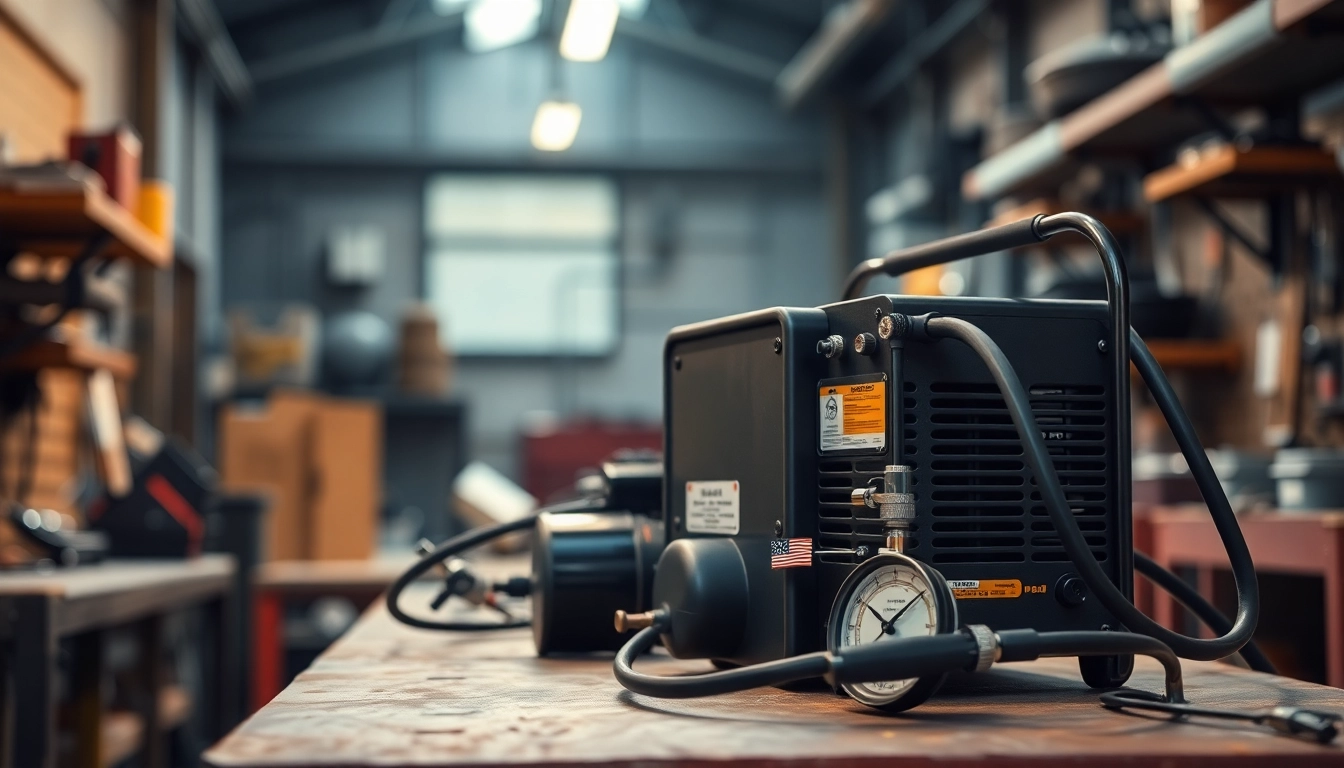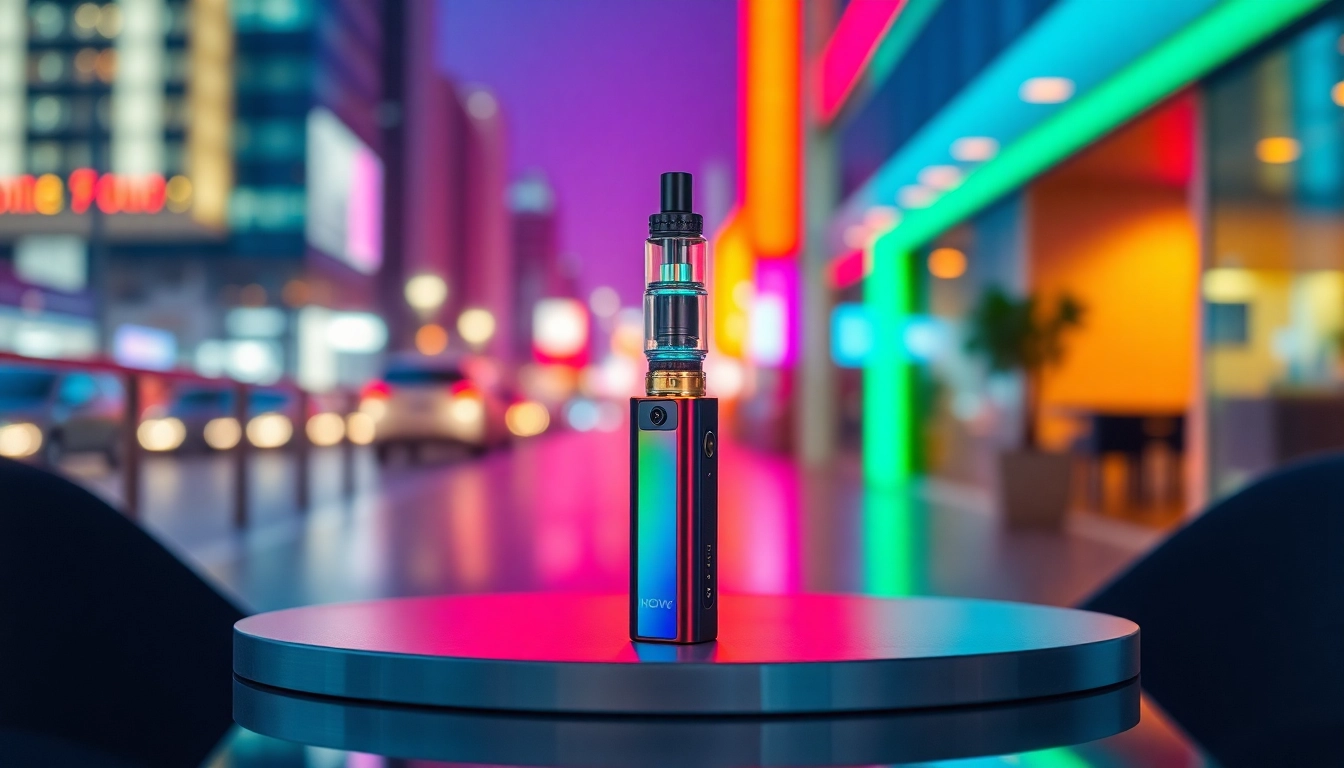Understanding Oxy Gas Welding Kits
What Is an Oxy Gas Welding Kit?
Oxy gas welding kits, commonly known as oxy-acetylene welding kits, are essential tools employed in various welding applications, from metal fabrication to repair work. These kits combine oxygen and acetylene gases to produce a high-temperature flame capable of melting and fusing metals. The fundamental principle behind oxy-acetylene welding is to utilize the intense heat generated by the combustion of these gases, which can reach temperatures exceeding 3,500 degrees Celsius (6,332 degrees Fahrenheit). This process not only allows for welding but also enables cutting, brazing, and heating metals, making it a versatile choice for both professionals and hobbyists.
Typically, an oxy gas welding kit includes all necessary components, which may differ in size and specification based on the intended application. A good example of a high-quality model is the oxy gas welding kit offered by various suppliers, consisting of a torch, gas cylinders, gauges, regulators, and appropriate hoses.
Components of an Oxy Gas Welding Kit
An effective oxy gas welding kit comprises several critical components, each playing a vital role in the welding process:
1. Gas Cylinders: Typically, the kit contains two cylinders – one for oxygen and the other for acetylene. The size and capacity of these tanks can vary, with smaller tanks suited for light-duty applications and larger tanks employed for more extensive industrial tasks.
2. Regulators: These devices control the pressure of the gases flowing from the cylinders to the torch. Proper regulation is essential for achieving the correct flame characteristics needed for different welding techniques.
3. Welding Torch: The torch is the focal point where the gases mix and ignite. It generally consists of a handle, mixing chamber, and nozzle. The choice of nozzle size directly affects the flame’s geometry and temperature.
4. Hoses: Flexible hoses connect the cylinders to the torch. They are usually color-coded—red for acetylene and green for oxygen—to prevent accidental misuse.
5. Cutting Attachment (if included): Many oxy gas welding kits come with a cutting attachment that allows for the cutting of metal plates and structures, expanding the kit’s functionality.
Understanding each component’s role is crucial for effectively utilizing the oxy gas welding kit and achieving optimal results.
Benefits of Using an Oxy Gas Welding Kit
Opting for an oxy gas welding kit offers numerous advantages that enhance both efficiency and effectiveness in welding tasks:
– Versatility: One of the primary benefits of oxy-acetylene welding is its versatility. This method can be used for welding, cutting, brazing, and even providing heat for metal shaping.
– Portability: Oxy gas welding kits are relatively portable, making them suitable for on-site repairs and projects. The absence of heavy machinery facilitates mobility, which is advantageous for contractors and DIY enthusiasts.
– Affordable Setup: Compared to other welding techniques, such as TIG or MIG welding, oxy-acetylene welding kits can be more cost-effective to set up. This affordability makes it an accessible choice for small businesses and home users.
– Ease of Use: Many users find oxy-acetylene welding straightforward, often requiring less training than other welding techniques. The simplicity of controlling gas flow and flame characteristics allows for quick learning curves, making it an excellent option for newcomers.
– Quality Welds: When executed correctly, oxy gas welding can produce strong, high-quality welds. The ability to precisely control the flame and heat ensures that welds are clean and free from significant oxidation or debris.
With these benefits, it’s clear why oxy gas welding kits remain popular among professionals and hobbyists alike.
Choosing the Right Oxy Gas Welding Kit
Factors to Consider
When selecting the right oxy gas welding kit, several factors should be taken into consideration to ensure that you purchase a kit that suits your needs:
1. Application Type: Consider the specific tasks you intend to perform. Will the kit be used for light repairs, automotive work, or heavy-duty industrial applications? This factor heavily influences your choice of equipment.
2. Components and Accessories: Evaluate the included items. Ensure the kit has all essential components, such as regulators and hoses, and assess if it includes additional accessories like a cutting attachment or various nozzle sizes.
3. Portability: Assess the weight and size of the kit. If you plan to move the kit frequently or use it in various locations, a more compact and lightweight option may be favorable.
4. Ease of Use: For beginners, selecting a kit with user-friendly regulators and clear instructions is crucial. Kits designed for novice welders often have features that ease the learning process.
5. Brand and Quality: Research the brand’s reputation in producing reliable welding kits. Established brands typically offer better warranties and customer support, increasing the kit’s value.
6. Safety Features: Look for kits that prioritise safety features, such as flashback arrestors, which prevent flames from traveling back into the gas supply lines.
By taking these factors into account, you can ensure that you choose the appropriate oxy gas welding kit that aligns with your requirements.
Budget-Friendly Options Vs. Premium Choices
When it comes to selecting an oxy gas welding kit, consumers typically face a choice between budget-friendly options and premium models. The decision largely depends on individual needs and usage frequency.
– Budget-Friendly Options: These kits typically cover basic welding needs and are ideal for casual users or hobbyists. Prices may start as low as $100, offering a basic regulator, torch, and hoses. While these kits may satisfy the needs of light-duty applications, they might lack comprehensive features and durability that can pose challenges in long-term use.
– Premium Choices: Premium welding kits, ranging from $200 to $500 or more, are designed for heavy-duty applications and often include features like advanced regulators, high-quality hoses, and additional accessories. These kits typically offer greater durability, better performance, and safety features desired by professional welders and contractors.
Ultimately, choosing between budget-friendly and premium options will depend on your specific needs, frequency of use, and willingness to invest in quality equipment that will endure wear and tear over time.
Online vs. Local Purchases
Deciding where to purchase your oxy gas welding kit can significantly affect your buying experience. Both online and local purchases have their pros and cons:
– Online Purchases: Shopping online provides access to a broader selection of products at various price points. You can easily compare different kits, read customer reviews, and often find better deals. Online retailers may also offer more detailed product descriptions and specifications, assisting you in making informed decisions. However, the downside includes shipping times, potential return difficulties, and the inability to physically inspect the item before buying.
– Local Purchases: Buying locally allows you to inspect the kit physically. You can ask questions directly to sales associates and receive immediate assistance, which is beneficial for first-time users. Local purchases often mean shorter waiting times since you can take the product home immediately. However, local stores may have more limited inventory and higher prices compared to online retailers.
When selecting where to buy your oxy gas welding kit, weigh these advantages and disadvantages based on your personal preferences and circumstances.
Safety Practices for Oxy Gas Welding
Essential Safety Gear
Safety should always be the top priority when engaging in oxy gas welding. Equipping yourself with the proper safety gear ensures protection from the high temperatures and potential hazards associated with welding. Essential items include:
– Protective Goggles or Faceshield: These should be worn to shield your eyes from bright welding flames and flying sparks. Look for goggles with filters appropriate for welding applications.
– Flame-Resistant Clothing: Fabric that is flame-resistant helps prevent burns. Avoid wearing synthetic materials, as they can ignite quickly and adhere to the skin.
– Leather Gloves: Sturdy gloves protect your hands from hot materials and sparks, allowing for better control while operating the welding torch.
– Steel-Toed Boots: To protect your feet from heavy items, steel-toed boots equipped with slip-resistant soles are recommended.
– Respirator: In some instances, particularly in confined spaces, taking precaution against fumes is crucial. Using a respirator can safeguard your lungs from harmful gases and particulates released during welding.
By properly using this safety gear, you can significantly reduce the risk of accidents and injuries during the welding process.
Best Practices While Welding
Implementing best practices while welding is critical for ensuring both safety and quality of work. Here are several key practices to consider:
– Work in a Well-Ventilated Area: Ensure adequate airflow to promote the dispersal of harmful fumes and gases. If working indoors, make arrangements for proper ventilation such as exhaust fans or open windows.
– Clean the Work Area: Keep the workspace free from flammable materials, including paper, wood, or cloth. A clean area reduces the risk of accidental fires.
– Control the Flame: Monitor and adjust the flame carefully. A neutral flame—where the inner cone is sharp and well-defined—is generally best for most welding operations. Adjust gas flow if the flame is too large or too small.
– Perform Regular Equipment Checks: Inspect hoses for leaks, regulators for proper function, and ensure that your torch is functioning correctly before beginning work. Address any issues promptly to avoid malfunction during welding.
– Practice Proper Torch Handling: Always keep the torch pointed away from yourself and others. Utilize the safety features of the torch effectively and turn off gas valves when finished.
By adhering to these practices, you will contribute to a safer working environment and yield better welding results.
Storing Your Oxy Gas Welding Kit Safely
Proper storage of your oxy gas welding kit is fundamental to ensuring safety and preserving the integrity of the equipment. Here are strategies for effective storage:
1. Store in an Upright Position: Keep gas cylinders stands upright with their protective caps in place when not in use. This prevents accidental damage to the valves and reduces the risk of gas leaks.
2. Use a Dedicated Storage Area: Choose a designated storage space that is well-ventilated, away from direct sunlight, and not accessible to unauthorized personnel, particularly children.
3. Securely Fasten Hoses: Ensure that hoses are coiled and stored away from sharp edges to prevent abrasions or punctures. Use a hose rack or storage container designed for this purpose.
4. Regularly Inspect Storage Conditions: Check the storage environment periodically to ensure it remains dry and free from hazards that could cause damage to your oxy gas welding kit.
By establishing a consistent and careful approach to storage, you prolong the life of your equipment while minimizing risks associated with gas welding.
Common Issues and Solutions with Oxy Gas Welding Kits
Frequent Troubleshooting Tips
Even the best oxy gas welding kits can encounter issues over time. Here are common problems and potential solutions:
– Uneven Flame: If the flame appears uneven or unstable, it may be due to improper gas mixtures, faulty regulators, or dirty nozzles. Check gas settings, clean the nozzle, and examine the regulator for any malfunction.
– Burning Smell or Smoke: A burning smell or excessive smoke indicates a potentially dangerous situation. Immediately cease working, assess your workspace for flammable materials, and check for potential leaks in hoses and fittings.
– Pressure Drops: If you notice a sudden drop in gas pressure, it could indicate a leak in the hose or the regulator. Inspect the entire setup for signs of wear, and if detected, replace any damaged components.
– Difficulties Igniting the Torch: If the torch fails to ignite, check the gas supply, ensure valves are open, and inspect for clogs in the nozzle.
Addressing these issues promptly can prevent further complications and enhance the overall efficiency of your oxy gas welding kit.
How to Maintain Your Equipment
Regular maintenance is essential to ensure the longevity and performance of your oxy gas welding kit. Here are essential maintenance practices:
– Inspect Regularly: Conduct routine inspections of all components, including cylinders, regulators, hoses, and torches, for signs of wear or damage.
– Clean the Nozzle: Frequently clean the welding nozzle to prevent clogs that can interfere with the gas flow and flame stability. Use appropriate cleaning tools designed for torch maintenance.
– Check for Leaks: Periodically check hoses and fittings for leaks using a soap solution. If bubbles form, this indicates a leak that needs immediate attention.
– Store Properly: Follow safety and storage guidelines mentioned earlier to keep your equipment in the best condition possible when not in use.
– Seek Professional Servicing: If you encounter persistent issues that you cannot resolve, consider seeking professional servicing. An expert can provide detailed inspections and maintenance to identify hidden issues.
By maintaining your equipment diligently, you can ensure that it operates reliably and safely for years to come.
When to Seek Professional Help
While many users can troubleshoot and maintain their oxy gas welding kits independently, there are instances when professional assistance is essential:
– Complex Repairs: If the kit has major issues that extend beyond simple leaks or clogs, consult with a professional welder or equipment repair specialist who can diagnose and fix complex problems.
– Regulator Malfunction: A faulty regulator can drastically affect performance and safety. If you suspect that the regulator is malfunctioning, seeking professional help is essential to ensure proper function and safe operation.
– Equipment Upgrade: When considering upgrades or expansions to your equipment, consulting with a welding expert can provide insight into selecting compatible components and systems that meet your needs.
– Safety Compliance Checks: Periodically, it may be beneficial to have an expert review your equipment setup for safety compliance, especially if you work in an industrial environment with regulatory requirements.
Consulting professionals in these cases ensures you maintain an efficient, safe, and functional oxy gas welding setup.
Buying Guide for Oxy Gas Welding Kits
Where to Find Quality Kits
Locating a reliable source for purchasing oxy gas welding kits can significantly impact the quality of your equipment. Here are avenues to explore when searching for quality kits:
– Reputable Welding Supply Stores: Look for established welding supply retailers. These businesses often carry high-quality products and have knowledgeable staff who can provide expert recommendations.
– Industrial Equipment Suppliers: Many suppliers specialize in tools and equipment for industrial use. Consulting them can lead to sourcing professional-grade kits designed for extensive usage.
– Online Retailers: Shopping online offers a vast selection of kits from various brands. Pay attention to customer reviews, product ratings, and return policies when purchasing online to ensure quality.
– Local Hardware Stores: While not always extensive in selection, local hardware stores can offer solid options for users needing basic kits promptly.
Choosing a trusted vendor ensures you receive quality products backed by customer support and warranty options.
Comparing Prices and Features
Comparing prices and features is vital when selecting an oxy gas welding kit. Here’s how to effectively evaluate your options:
– Feature Checklists: Make a checklist of must-have features based on your needs and experience level. This list may include the number of included accessories, the type of regulators, and the quality of hoses.
– Price Comparison Websites: Utilize price comparison websites or tools that aggregate information from different retailers, offering an easy way to compare prices and features side-by-side.
– Customer Reviews: Take time to read customer reviews to assess real-world performance and potential issues with certain kits. Pay attention to feedback regarding durability, ease of use, and customer service experiences.
– Warranty and Support: Assess the warranty length and customer support offered by the manufacturer. A longer warranty period often indicates confidence in product quality.
By thoroughly comparing prices and features, you can make an informed choice that balances your budget with the necessary features.
Reviews and Recommendations
Before finalizing your purchase, seeking reviews and recommendations from professionals or fellow welders can provide valuable insights:
1. Forums and Online Communities: Participate in welding forums, social media groups, or dedicated websites where users share their experiences and recommendations regarding specific kits.
2. YouTube Reviews: Many content creators specialize in reviewing welding tools, providing demonstrations that illustrate how equipment operates in real-world situations. Watching these reviews can assist in visualizing kit features and usability.
3. Word of Mouth: Speak with local welders or friends in the industry. Recommendations from trusted individuals can lead to finding reliable brands and models that may not appear high in online searches.
4. Industry Publications: Leading industry magazines often conduct reviews and provide insights about the latest products, covering performance, reliability, and innovations in the field.
Engaging with these resources empowers you to make a knowledgeable purchase that aligns with your expectations and needs.



